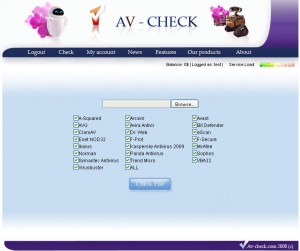In a year marked by record bank failures and Wall Street swindlers walking away with tens of billions of investor dollars, it’s perhaps not surprising that the activities of organized cyber gangs looting at least $100 million dollars from small to mid-sized businesses went largely unheralded.
 The mainstream media could be forgiven for focusing on bigger fish. For one thing, this particular strain of fraud has many moving parts and is challenging to explain to broad audiences. Also, raising awareness about fraud is always tough because the issue almost invariably involves U.S. banks and federal law enforcement, two entities that by their very genetic makeup resist discussing anything that is not tightly scripted and on-message: The FBI is hyper-reluctant to discuss or even acknowledge ongoing investigations (particularly those in which the main actors are overseas), and the banks simply don’t want to spook customers in any way.
The mainstream media could be forgiven for focusing on bigger fish. For one thing, this particular strain of fraud has many moving parts and is challenging to explain to broad audiences. Also, raising awareness about fraud is always tough because the issue almost invariably involves U.S. banks and federal law enforcement, two entities that by their very genetic makeup resist discussing anything that is not tightly scripted and on-message: The FBI is hyper-reluctant to discuss or even acknowledge ongoing investigations (particularly those in which the main actors are overseas), and the banks simply don’t want to spook customers in any way.
But law enforcement and the banking industry appear to have been at odds over how and how much to communicate with the public about the seriousness and impact of these crimes. The following anecdotes offer a peek into some of the struggles I experienced last year trying to extract useful and truthful information from both parties.
Friday, Aug. 21, 3:00 p.m. ET: I was wrapping up a story for The Washington Post about a confidential alert drafted by the Financial Services Information Sharing and Analysis Center (FS-ISAC), an industry group representing some of the nation’s largest banks. The document I’d gotten hold of seemed to validate the focus of my reporting for the previous 10 weeks: It said the FBI was tracking a major upswing in incidents involving organized computer thieves who were using malicious software to steal tens and hundreds of thousands of dollars from countless small- to mid-sized businesses throughout the United States.
I had finagled a draft version of the alert, and understood that the final version would be sent sometime later that day, although the distribution list was reportedly limited to a few hundred people — mostly law enforcement and bankers. Problem was, I couldn’t confirm whether the alert had in fact been sent as planned, or whether the final version was changed much from the version I’d obtained.
What’s more, after two days of waiting, I still had no meaningful response from the FBI to my query, which sought to verify the alert’s statement that the FBI believes organized cyber thieves involved in this type of crime were stealing at least a million dollars a week from victims, and that several new victim firms were coming forward each week.
My editor was restless: Without an answer to these questions, the story would hold until next week. The answers didn’t come, and the story held.
When I finally got confirmation the following Monday that the alert had gone out, I also learned that the final version had been significantly watered down. Gone were the monetary damage estimates, including this stark assessment: ‘Total economic impact of these activities, if they continue unabated, is likely to be in the hundreds of millions of dollars.’
Gone was any mention of specific countries to which the stolen tens of millions were flowing (Russia, Ukraine and Moldova). Removed was the part about the quasi-financial institutions responsible for the cross-border flow of stolen cash (Moneygram and Western Union).
Mind you, this was an alert that was not intended for public distribution, but merely to be sent to a small group of banks and law enforcement folks.
Continue reading →
 On Friday, Dec. 18, thieves tried to electronically transfer $1.86 million from the district’s account at NBT Bank to an overseas account. The following Monday, the attackers attempted to move another $1.19 million to multiple overseas location. It wasn’t until the next day, when transfers totaling $758,758.70 were flagged by a bank representative as suspicious, that the two previous unauthorized transactions were discovered, school officials said.
On Friday, Dec. 18, thieves tried to electronically transfer $1.86 million from the district’s account at NBT Bank to an overseas account. The following Monday, the attackers attempted to move another $1.19 million to multiple overseas location. It wasn’t until the next day, when transfers totaling $758,758.70 were flagged by a bank representative as suspicious, that the two previous unauthorized transactions were discovered, school officials said.









